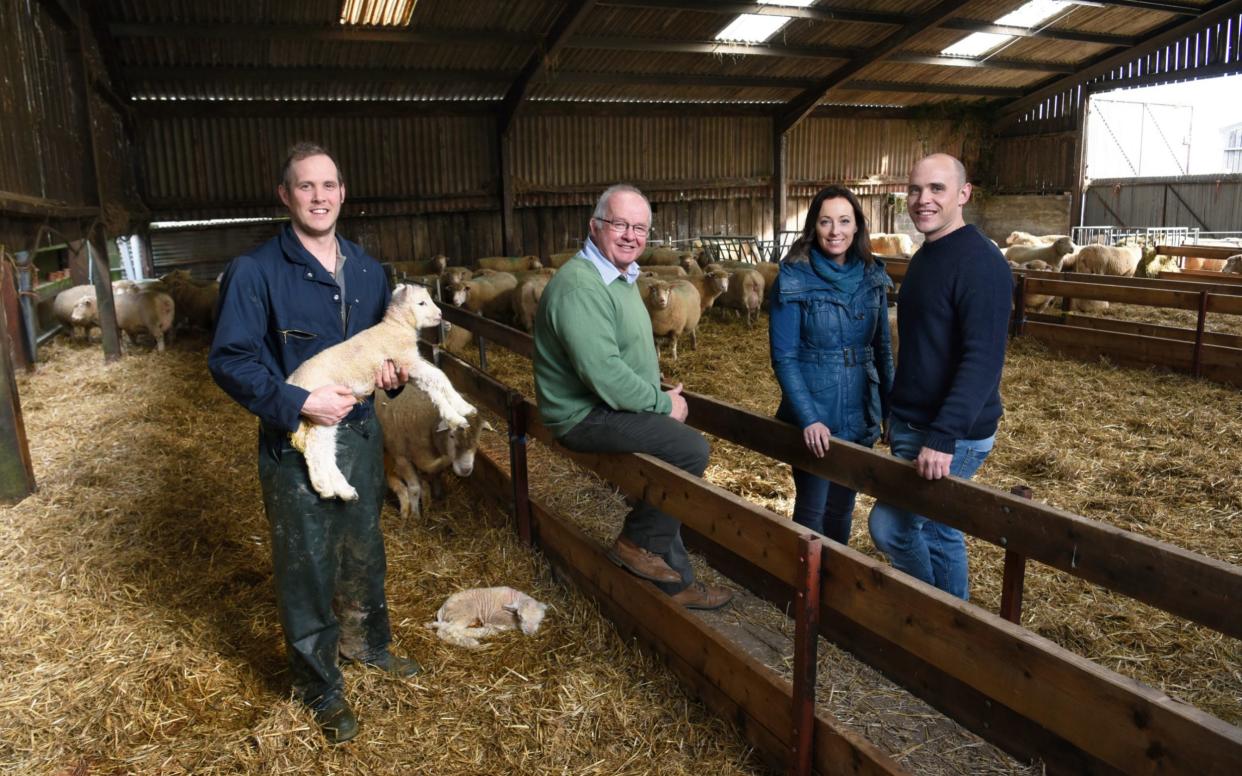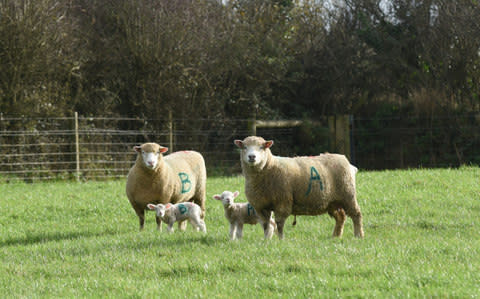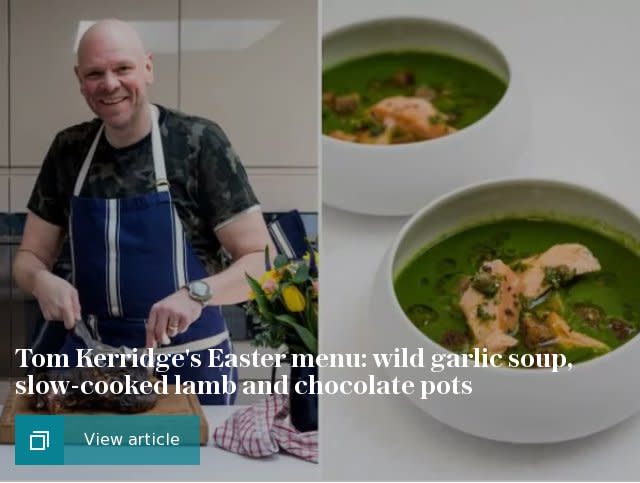The Cornish farm where autumn is the new spring when it comes to lambing

On a fresh November morning, the adorable bleat of a newborn lamb rings out in Penpont Farm. Seconds have passed since she emerged from her mother, who stands stoically observing her achievement before beginning to lick off the yellow meconium, helping the newborn to dry quicker and sealing their bond.
Watching wide-eyed are the Brigham family, on a holiday to Cornwall from their home in Bristol. Three-year-old Thea, in her yellow wellies, drinks in the scene. A barn full of autumn lambs will make no sense to the uninitiated, but at Penpont farm in north Cornwall, the Hawkey family have been farming this way for more than 100 years. Sheep farmers in the South West have long found that their milder climate means they can spread the load of lambing, which for Penpont, with its 900-strong flock of Poll Dorsets, goes a long way to easing the workload. In autumn, the older sheep lamb for four weeks before the younger, less experienced mums take their turn in spring.
“In February we have so much other stuff to be doing – planting crops – that getting half the lambing done now really helps out quite a bit,” says Olly Hawkey, the fourth generation of farmers at Penpont.
A good size lamb is about the size of a Jack Russell dog, just with longer legs
Olly Hawkey
This newborn is just one of 480 lambs expected between November and early December. Scans of the 350 expecting ewes mean Olly is prepared for the 240 twins and 30 triplets among their number.
As Olly checks that the lamb is breathing and can hold her head up, the Brigham family are enchanted by the scene of new life. “We had no idea you could get lambs at this time of year,” says dad, Mark.
But not all labours are as smooth. A lamb can get stuck, especially a single lamb that’s grown to be quite big. “It should come out front feet first, followed by the head. But if it is the wrong way round it gets stuck,” explains Olly. Although they try to assist as little as possible, it’s then that he or farmhand Rob Hawkey, a first cousin, will intervene to turn it around.
“Sometimes we have to help a lamb to take its first breath, so we massage its middle, wipe the mucus from its nose, poke its nostrils with straw to try to bring on a sneeze. As a last resort we’ll swing it gently by its back legs.” Roughly 10 minutes after being born, a lamb will ease itself up on to its gangly legs for the first time. Although some farmers weigh their lambs, Penpont simply sizes it up. “A good size lamb is about the size of a Jack Russell dog, just with longer legs,” Olly adds.
The Brighams have lucked out catching the first lamb of the morning, but it won’t be the last. The day before, 34 lambs were born and the pens that house mum and offspring are filled with fluffy, white faces. It is a juggling process to make sure there are enough pens for all the newborns. “We need to keep them in for two days, before – if it’s not raining – we turn them out into the field. If we’re unlucky there’s a backlog,” says Olly.
Keen to clear space, he and Rob fill a trailer with mums and lambs. Looking on is Olly’s dad, Andrew Hawkey, who jokes about being not so much retired as tired. “As soon as they’re let out in the field they find their mum in seconds. I don’t know how they know, but they know,” says the 63-year-old.
Andrew’s grandfather, Edgar Theophilus Hawkey Snr, took on Penpont in 1915. The youngest son on the family farm in St Wenn, he came to Penpont near Polzeath in search of work, back in the days before mechanisation when man and horse provided the power for arable farming. Soon afterwards, the owner went off to the First World War and never returned. Edgar was given the chance to buy the farm, then 350 acres. He was succeeded by his son Edgar Jnr and by his son, Andrew, in turn.
In the Sixties the family started hosting farm stays, converting disused barns into cottages. Then, in 1984, Andrew added a swimming pool (which has just been renovated). The site now has 28 cottages with permission for eight more. But at 550 acres, Penpont is very much a working farm. As well as producing crops for animal feed and breeding sheep, the farm also buys in bullocks when they’re young and fatten them up for beef.

Andrew’s eldest son, Shaun, who along with his wife Jaime manages the holiday cottages and activities, says: “We are definitely a farm stay. We’ve just bought another 50 acres and recently missed out on buying another 150. So we’re definitely not diversifying away from the farm. People who come expect some noise and smells.”
Indeed, it’s part of the attraction, with city families like the Brighams attracted by the lambing weekends. While Shaun never wanted to be a farmer, it has been a boon to the family that diversifying into farm stays mean his children can also grow up in touch with their farming heritage.
His three sons, aged nine, seven and five, and Olly’s three sons, aged five, three and one, can be found getting stuck in helping in the lambing shed, or in the case of the youngest, watching.
Although it is something of a competition between the brothers about who works hardest, right now farmer Olly is the undisputed winner. For the past three nights he has been in the lambing shed until past 1am and then up with the lark. The sheep are only left unattended for about four hours at night when no births appear imminent.

Not all local farmers opt for an early lambing season, but for the Hawkeys it breaks up the gruelling schedule.
“It’s just always been the way we’ve done it,” says Andrew. “My cousin has all his 1,500 lambs in March and he’s working like a madman.” In a pen under a warming light are three tiny lambs huddled together. They have been taken from mums who had triplets and don’t have enough milk for all three. They will either be bottle fed, or a given to a ewe whose own lamb didn’t survive labour.
“Tame lambs are usually a problem for farmers, because then you have to look after them,” explains Jaime. “But we can put them in our pets’ corner for the families staying with us to see. So it’s a bonus.”
But, although absurdly cute and soft and warm to cuddle, these lambs aren’t destined for petting zoos.
Most of the females will be kept to restock the flock (usually put to the ram when they are just over a year old), but after three months in the field, the males will go off to slaughter, destined to catch the premium Easter trade. “It’s a tough life,” admits Jaime.
The maximum age they keep a ewe is seven years, so some of the older mums, or those that due to birthing complications won’t be able to lamb again, also go for slaughter, for mutton. For now, though, the lambs have the freedom of the still-green Cornish fields and as much of their mum’s milk as they can get.
Meanwhile, Olly can barely get a bite of breakfast. “I’ve had 20 lambs born a day for the past week. I would like to think next week is the last, but I’ve got three weeks left.” Plenty of sheep to count, but not much sleep.

 Yahoo News
Yahoo News 
